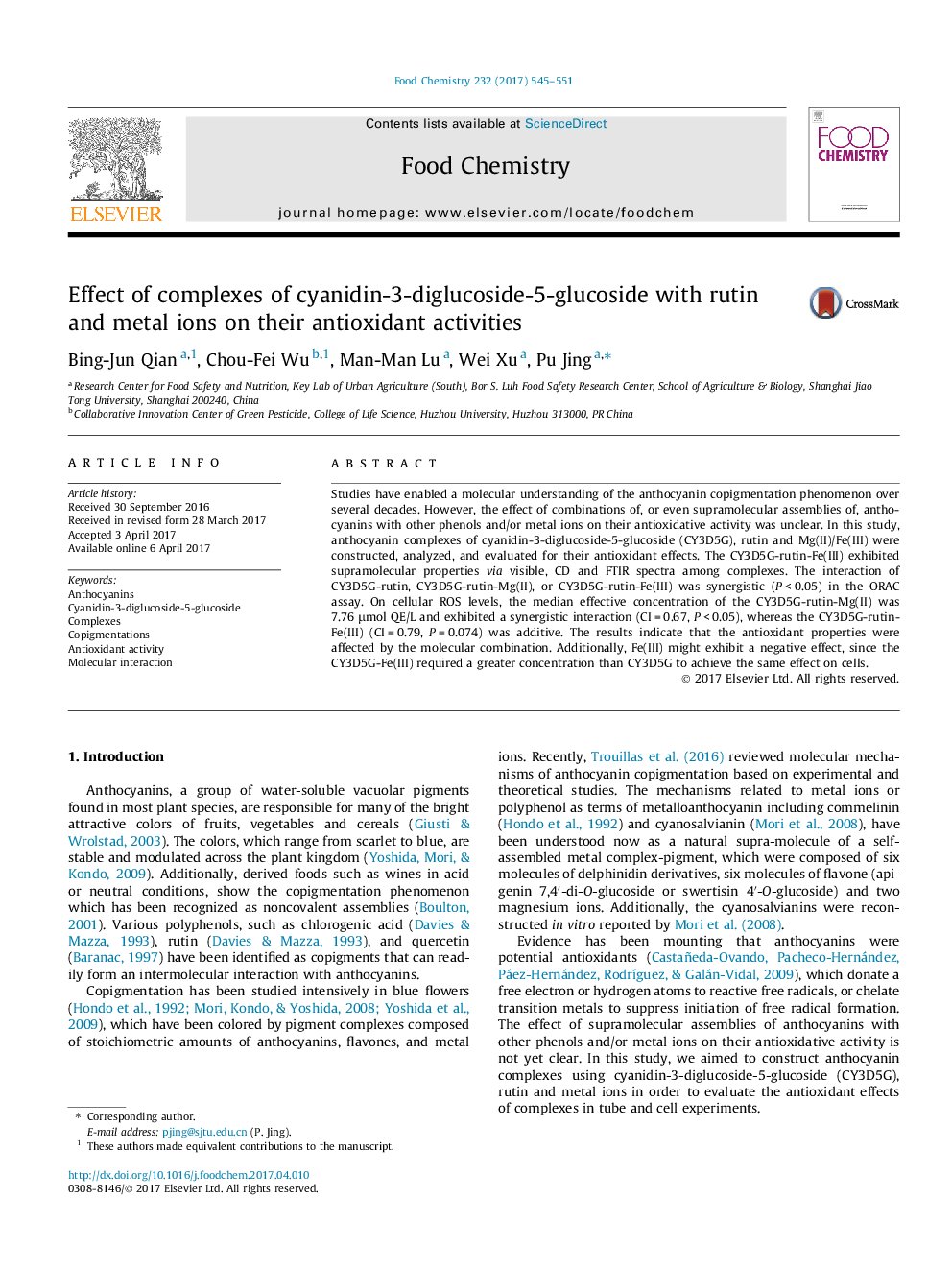| Article ID | Journal | Published Year | Pages | File Type |
|---|---|---|---|---|
| 5133434 | Food Chemistry | 2017 | 7 Pages |
â¢CY3D5G-rutin-Fe(III) showed supramolecular properties clearly via visible, CD and FTIR spectra.â¢CY3D5G-rutin-Mg(II)/Fe(III) showed synergistic interactions on ROS reduction in ORAC assay.â¢CY3D5G-rutin-Mg(II)/Fe(III) were synergistic/additive interactions on cellular ROS levels.â¢The molecular antioxidant properties were affected by the combination of complexes.â¢Fe(III) might exhibit a negative effect on cellular ROS reduction.
Studies have enabled a molecular understanding of the anthocyanin copigmentation phenomenon over several decades. However, the effect of combinations of, or even supramolecular assemblies of, anthocyanins with other phenols and/or metal ions on their antioxidative activity was unclear. In this study, anthocyanin complexes of cyanidin-3-diglucoside-5-glucoside (CY3D5G), rutin and Mg(II)/Fe(III) were constructed, analyzed, and evaluated for their antioxidant effects. The CY3D5G-rutin-Fe(III) exhibited supramolecular properties via visible, CD and FTIR spectra among complexes. The interaction of CY3D5G-rutin, CY3D5G-rutin-Mg(II), or CY3D5G-rutin-Fe(III) was synergistic (P < 0.05) in the ORAC assay. On cellular ROS levels, the median effective concentration of the CY3D5G-rutin-Mg(II) was 7.76 μmol QE/L and exhibited a synergistic interaction (CI = 0.67, P < 0.05), whereas the CY3D5G-rutin-Fe(III) (CI = 0.79, P = 0.074) was additive. The results indicate that the antioxidant properties were affected by the molecular combination. Additionally, Fe(III) might exhibit a negative effect, since the CY3D5G-Fe(III) required a greater concentration than CY3D5G to achieve the same effect on cells.
